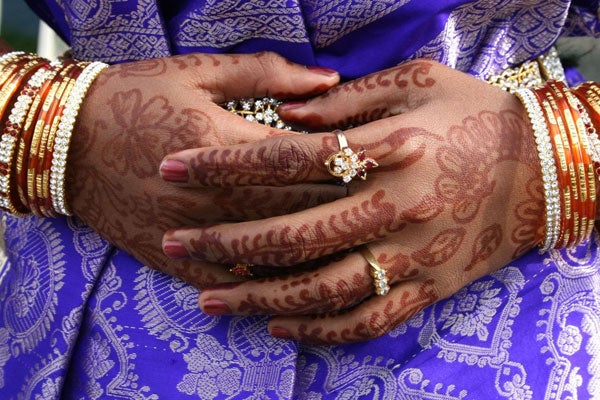The facts of life: marriage

The number of marriages in England and Wales that were the first marriage for both partners peaked in 1940 at 426,100 when 91 per cent of all marriages were the first for both partners. This number has since fallen to 144,120 in 2006, accounting for 61 per cent of all marriages.
On average, couples get engaged two years, 11 months and eight days into their relationship. However, women feel ready for marriage even earlier two years, seven months and 24 days to be precise. One in ten of the 3,000 engaged or married participants in the study that produced these figures had set a time limit on their engagement; 75 per cent of them would have shown their partner the door if it hadn't been kept to.
The average wedding in the UK now costs 20,273, according to a study by You and Your Wedding Magazine. This includes 7,724 for the reception, 3,220 for the honeymoon, 1,412 for the engagement ring and 1,242 on drinks. Doing the dishes together is one of the keys to a happy marriage, according to a survey by the Pew Research Centre of 2,000 Americans. Sharing the housework came third behind faithfulness and sex in the most popular factors for a happy union, even beating money, children and a nice home.
The Himba people of Namibia kidnap a bride before the ceremony and dress her in a leather marriage headdress. After the ceremony she is brought into the house where the family tells her what her responsibilities will be as the wife and then anoint her with butterfat from cows. This shows that she has been accepted into the family.
The notion of marriage as sacrament can be traced to St Paul, who, in his Epistle to the Ephesians, compared the relationship of a husband and wife to that of Christ and his church.
The Marriage Act 1836 and the Registration Act 1836 came into force in 1837 in England and Wales. There were 118,000 marriages in the first full year of civil registration in 1838 in England and Wales.
One single woman in five is thought to be stashing away money for her wedding even without having found a groom.
The custom of giving a ring can be dated back to the ancient Romans. It is believed that the roundness of the ring represents eternity. Therefore, the wearing of wedding rings symbolizes a union that is to last forever. It was once thought that a vein or nerve ran directly from the "ring" finger of the left hand to the heart.
Scientists believe they have found the gene needed for a happy marriage after studying rodents' mating habits. Men carrying a common variation of a gene involved in brain signalling were more likely to be in unhappy marriages than men with the other version, the team at the Karolinska Institute found.
At a Hindu wedding, the bride's hands are painted with henna with a design which often includes the initials of her betrothed. The couple then search for the initials on the wedding night. This game is played to make the bride and groom more relaxed and at ease with each other.
Polyandry is a practice where a woman is married to more than one man at the same time. Fraternal polyandry was traditionally practised among nomadic Tibetans in Nepal and parts of China, in which two or more brothers shared the same wife. Polyandry is believed to be more likely in societies with scarce environmental resources, as it is believed to limit human population growth and enhance child survival.
Subscribe to Independent Premium to bookmark this article
Want to bookmark your favourite articles and stories to read or reference later? Start your Independent Premium subscription today.

Join our commenting forum
Join thought-provoking conversations, follow other Independent readers and see their replies